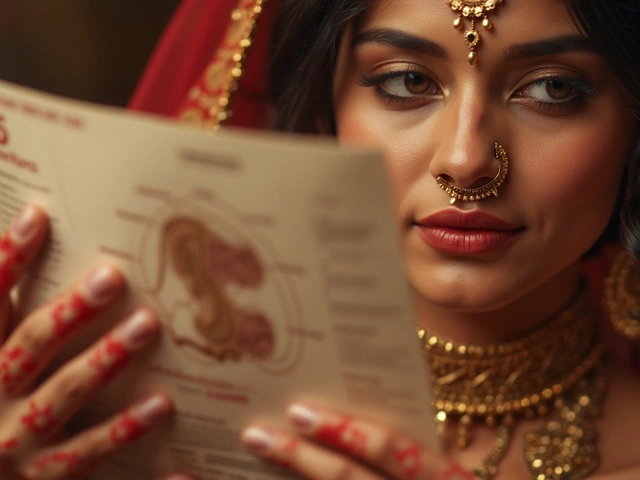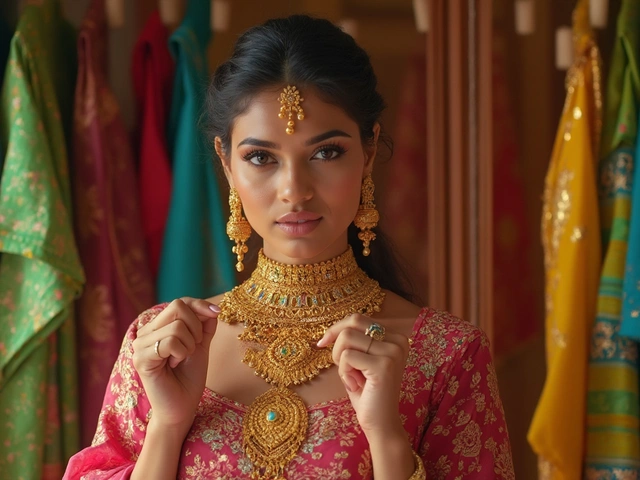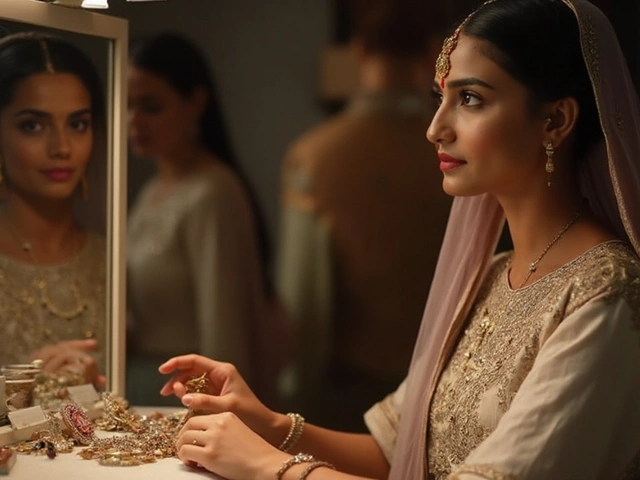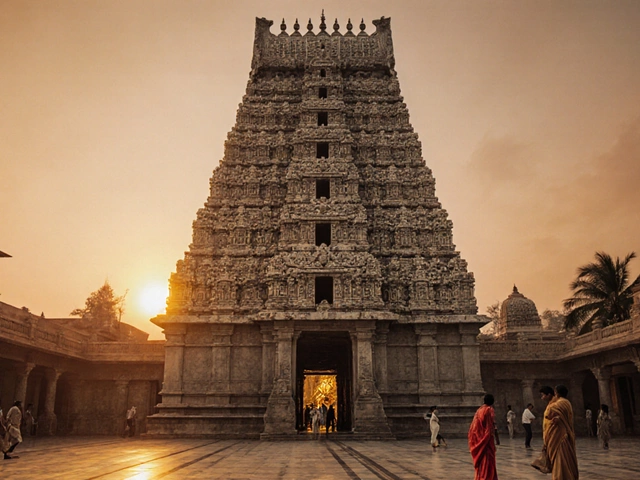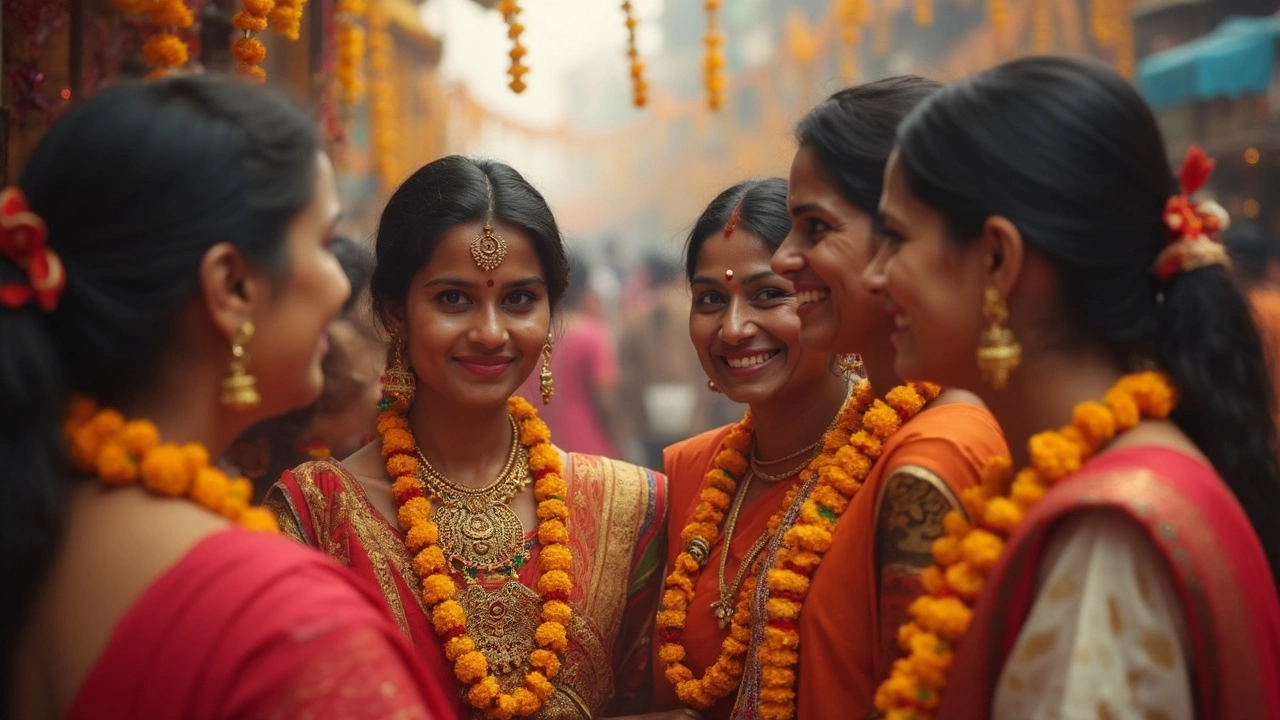
Ever picked up a piece of Indian jewelry and wondered if it’s really OK to wear it, especially if you’re not Indian? You’re definitely not alone. With the bold designs and striking gold work that comes with temple jewellery, it’s easy to fall in love at first glance. But a lot of people second-guess whether wearing it crosses a line or if it’s a sign of appreciation.
Here’s the truth: Indian jewelry, especially temple jewellery, tells a story. These pieces often carry deep meaning, from blessings at home to dances at grand festivals. Knowing the basics helps you avoid accidental slip-ups and wear these works of art with confidence. There’s nothing wrong with wanting to rock that elaborate necklace or bold set of earrings—as long as you’re clued in on what they actually mean and how to wear them respectfully.
If you’re thinking about adding Indian jewelry to your look, you’ll want more than just style tips. Real talk—respect comes first, but so does having fun and feeling good in what you wear. Stick around for facts you might not have heard, tips for picking the right piece, and how to show love for the culture behind those shimmering gems.
- What is Temple Jewellery?
- Who Traditionally Wears Indian Jewelry?
- Cultural Etiquette: What’s Cool, What’s Not
- How to Choose and Style Temple Jewellery
- Celebrating Tradition Without Offense
What is Temple Jewellery?
Temple jewellery isn’t your average shiny bling—it’s a style that goes way back to South Indian temples. Around the 9th century, artisans hand-made gold pieces to decorate gods and goddesses in temple rituals. Later, Bharatanatyam dancers started wearing similar designs. Now, these pieces stand out as cultural symbols, loaded with details you won’t see in regular jewelry.
Temple jewellery is all about heavy gold, chunky looks, and big pendants shaped like lotuses, coins, or goddess faces. Craftsmen blend gold plating with real gemstones like rubies and emeralds. If you notice red and green—classic colors. There’s no plastic or dull metal here; even new pieces get made the old-school way, by hand.
Check out some quick facts:
| Typical Material | Main Uses | Popular Designs |
|---|---|---|
| Gold (pure or plated), Silver, Gemstones | Religious ceremonies, Dance performances, Weddings | Peacocks, Flowers, Goddess Lakshmi, Bel-leaf, Coins |
Usually, “temple jewelry” refers to:
- Big necklaces called “Haram” or “Addigai”
- Heavy earrings like “Jhumkas”
- Broad waist belts called “Vaddanam”
- Choker necklaces
- Headpieces and bangles full of detail
If you see a piece with intricate goddess faces or chunky red stones, you’re probably looking at temple jewellery. Today, people wear these both for tradition and fashion—so you’ll spot them in festivals and on runways. Just remember, each design usually ties to a specific region or ritual. You’re not just adding to your style—you’re basically carrying a slice of history.
Who Traditionally Wears Indian Jewelry?
When you see Indian jewelry, especially temple jewellery, it mostly comes from South India. Usually, this jewelry shows up at special moments—think weddings, festivals, and religious ceremonies. But it’s not just for show; in lots of families, these pieces get passed down for generations and hold serious sentimental value.
Traditionally, temple jewellery was first made for adorning Hindu gods and goddesses in temples. That's actually where the name comes from. Over time, it made its way to classical Indian dancers—especially Bharatanatyam and Kuchipudi performers—who wear these pieces as a crucial part of their dance costumes. Seeing a dancer perform without these classic gold pieces just doesn’t look right.
Here’s a quick breakdown of who traditionally wears Indian jewelry:
- Brides and wedding guests – Heavier, more elaborate pieces for big wedding days
- Classical dancers – Especially in Bharatanatyam, Odissi, and Kuchipudi performances, where wearing temple jewellery is part of the uniform
- Puja (prayer) attendees – Lighter temple jewellery for special poojas and religious events
- Festival goers – Many women and girls wear these pieces at major festivals like Diwali or Pongal
- Family elders – Grandmothers or mothers, especially in South Indian families, may wear classic temple jewelry daily or for family events
What’s interesting is how different age groups and communities relate to these ornaments. While super traditional temples and homes keep it for special occasions, younger generations sometimes mix temple jewellery into modern looks just for the aesthetic. That's a pretty fresh twist on an old tradition.
| Group | When It's Worn |
|---|---|
| Brides | Wedding ceremonies, engagement functions |
| Dancers | Classical dance performances |
| Everyday Wearers | Older women, special family gatherings |
| Festival Participants | Major festivals like Navaratri, Diwali, Pongal |
If you’re not Indian, you’re probably wondering if it’s a closed tradition for only these groups. The good news? Today, Indian jewelry crosses borders and gets appreciation everywhere, but knowing the background makes wearing it a lot more meaningful.
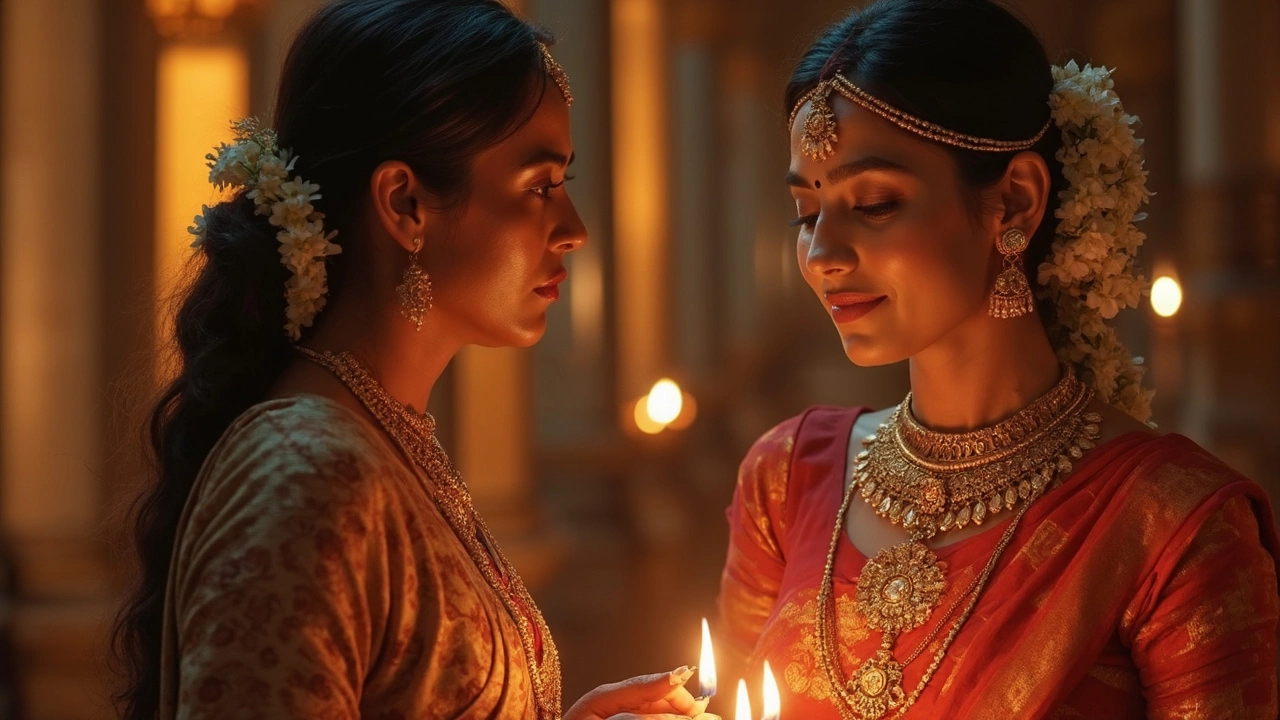
Cultural Etiquette: What’s Cool, What’s Not
Wearing Indian jewelry isn’t just about looking stylish—it’s about respect, too. When it comes to temple jewellery, people often worry, “Am I being disrespectful?” Here’s what really matters: context and intent. If you’re wearing it to honor the culture, not mock it or treat it like a costume, you’re already off to a good start.
Temple jewellery comes from South India and is typically worn during classical dance (think Bharatanatyam) or religious events. These pieces sometimes feature images of gods, which means they’re more than simple accessories. A good rule: avoid wearing sacred designs to parties or bars. Save them for special occasions like weddings, festivals, or cultural events—places where tradition and meaning matter.
- If you’re not sure if a piece is religious, ask someone who knows. Indian jewelers or friends who grew up with the tradition are usually happy to clue you in.
- Stay away from mixing temple jewellery with outfits that show a ton of skin. It’s not about modesty policing, but about matching the respect these pieces were made for.
- It’s perfectly fine to admire and wear Indian jewelry, just don’t claim it as your own culture or pretend to be an expert unless you actually are.
Anjana Reddy, founder of a popular Indian jewelry brand, summed it up perfectly:
"Indian jewellery is about telling a story. If you wear it with respect and interest in the culture, most people will appreciate your curiosity and style."
At the end of the day, true appreciation beats random trend-chasing. If in doubt, go for classic styles without heavy religious symbols. That way, you’re enjoying the beauty without risking disrespect. And when someone asks about your jewelry, give credit to the history behind it. That’s what’s really cool.
And remember, the keyword here is Indian jewelry—knowing the story behind what you wear makes all the difference.
How to Choose and Style Temple Jewellery
Stepping into the world of temple jewellery can be pretty confusing if you don’t know what to look for. The thing is, not every big, gold piece is temple style. Temple jewellery got its start in South India ages ago and was actually used to decorate idols in temples before dancers and brides started wearing it for special events. You’ll spot lots of gods, goddesses, coins, and peacock designs. Pieces are usually crafted in gold or gold-plated silver, sometimes with real rubies and emeralds. If you’re picking up the real deal, look for these classic details, not just any chunky necklace being sold online.
So, what should you keep in mind before you buy or put on temple jewellery?
- Occasion matters: Temple jewellery works best at weddings, festivals, or other big celebrations. Wearing it with jeans at the supermarket might feel off, but pairing it with simple Indian or modern outfits for a party? That’s a win.
- Balance is key: These pieces are often big and heavy. If you wear a dramatic necklace, go easy on the earrings or bangles. Let one piece do the talking and keep the rest mellow.
- Mix it up smartly: If you want to blend Indian and Western looks, start with a pair of temple earrings with a plain top, or layer a temple-design pendant with a crisp white shirt.
- Material check: If you’re avoiding animal-based products, know that classic temple jewellery sometimes uses silk threads or pearls. You can always ask before you buy.
- Respect traditions: Some temple pieces, like bell-shaped jhumkas or goddess motifs, are usually not worn in casual settings or at places like bars. When in doubt, ask or look up how locals wear it in India.
Here’s a pro tip: real temple jewellery can be heavy, so if comfort matters, look for lighter, modern versions. You’d be surprised at how many brands make easy-to-wear options with the same traditional vibe. At the end of the day, choose pieces that mean something to you or remind you of a cool story—don’t just go for what’s trending. If you wear it with a little understanding and a lot of confidence, temple jewellery really does become your own.
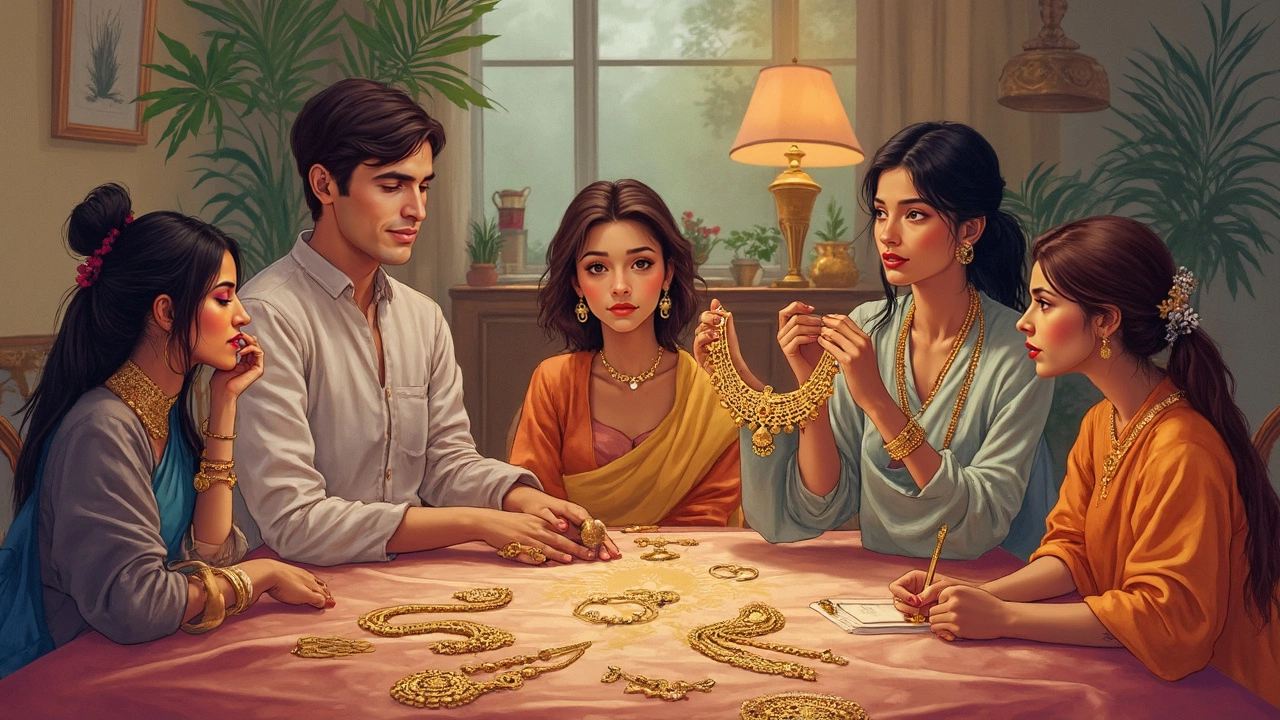
Celebrating Tradition Without Offense
Wearing Indian jewelry is about more than just style—it’s about showing respect for a culture that puts meaning behind every piece. This especially goes for Indian jewelry like temple jewellery, which usually represents devotion and tradition. But if you’re not from India or part of the culture, there are a few things you’ll want to keep in mind to avoid stepping on any toes.
First, understand what you’re wearing. A lot of temple jewellery is inspired by what’s used in Indian classical dance and Hindu temple rituals. Those pieces—like the big, round earrings called jhumkas or the goddess pendants you see on necklaces—aren’t just regular bling. Some are even blessed or used during religious ceremonies. So, before you wear something, learn a bit about its background.
Next up, avoid wearing temple jewellery at times when it could look disrespectful. It’s probably best to skip it at costume parties or events where you're mixing cultures just for fun. A genuine appreciation, not imitation, goes a long way. Shopping from Indian designers or brands who honor those traditions also helps support the right communities.
- Do a quick Google search about the piece or ask the seller for details.
- Be mindful of events. It’s usually fine to wear temple jewellery to weddings or festivals, but think twice for casual or unrelated occasions.
- Pair with simple clothes so the jewelry stands out for its own beauty, not as a costume.
- If someone from the culture raises a concern, listen—this is how you learn.
People in India wear these pieces to mark big life moments. Here’s a table showing when you’ll commonly see temple jewelry worn for its true meaning:
| Occasion | Why Temple Jewelry is Chosen |
|---|---|
| Weddings | Symbolizes prosperity and sacredness |
| Religious Festivals | Shows devotion, especially during temple visits |
| Classical Dance Performances | Represents tradition, part of dance attire |
| Blessing Ceremonies | Used for seeking blessings and good luck |
If you’re ever unsure, it’s fine to ask. Friends, shop owners, or even online communities are quick to explain the meaning behind certain pieces. There’s a difference between cultural appreciation and cultural appropriation—being curious and respectful puts you on the right side of that line. When you wear temple jewellery, wear it with honor, not just for looks.

